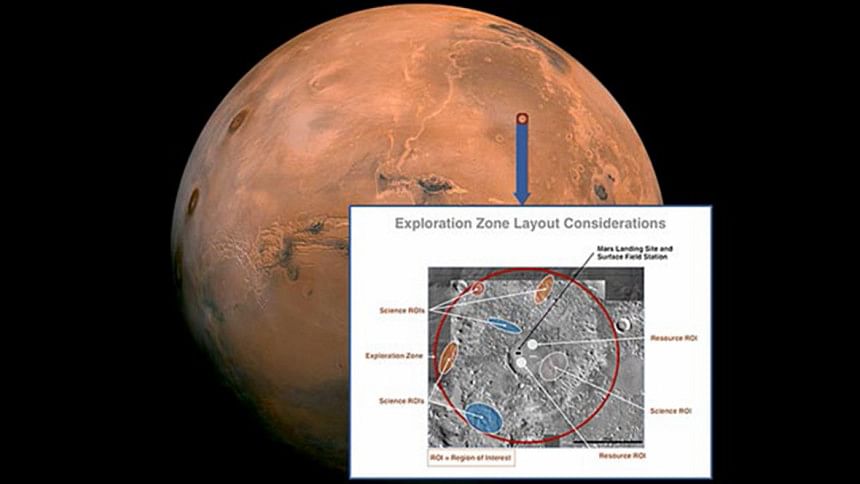Nasa to begin identifying landing sites for Mars

Nasa has reached out to the scientific community to help identify landing sites for a manned mission to Mars even though a trip by astronauts to the Red Planet is expected only by the late 2030s.
The US space agency has announced it will hold a conference during October 27-30 in Houston to gather proposals on areas on Mars that will be of high scientific research value while providing natural resources to enable human explorers to safely land, live and work on the planet, reports The Hindustan Times.
Nasa's first "Landing Site-Exploration Zone Workshop for Human Missions to the Surface of Mars will focus on 60-mile-wide "exploration zones" that could possess resources such as subsurface water ice to support humans.
The conference, the agency said, will advance the journey to Mars by "starting the conversation about where humans may one day land on the Red Planet".
The meet will start the process for choosing sites on Mars that could be studied by Nasa's Mars Reconnaissance Orbiter (MRO) and Mars Odyssey spacecraft, along with any future missions over the coming decades, to create better maps and provide scientific data of these potential "exploration zones".
"This is going to be a hot debate," Jim Green, head of Nasa's Planetary Science Division, said during a teleconference with the media last week.
"Humans are going to need high-resolution (imagery) over their whole exploration zone," Green said, adding that the MRO has captured high-resolution images of just 3 percent of the Martian surface.
"This, I think, is an enormous step in defining how we're going to operate on Mars and what do we need to take with us because we will have a much better idea of what's there," he added.
Nasa said the first explorers to Mars are expected to be limited to about 60 miles (100 km) of travel from their landing site because of life support and exploration technology requirements.
The agency's efforts to build knowledge and capabilities for sending humans to Mars are already underway with spacecraft monitoring Mars from orbit and rovers on the surface.
The International Space Station is also being used to test systems and to learn more about the health impacts of extended space travel. The development and testing of the next generation of launch and crew vehicles – the Space Launch System rocket and Orion crewed spacecraft – too is underway.

 For all latest news, follow The Daily Star's Google News channel.
For all latest news, follow The Daily Star's Google News channel. 



Comments